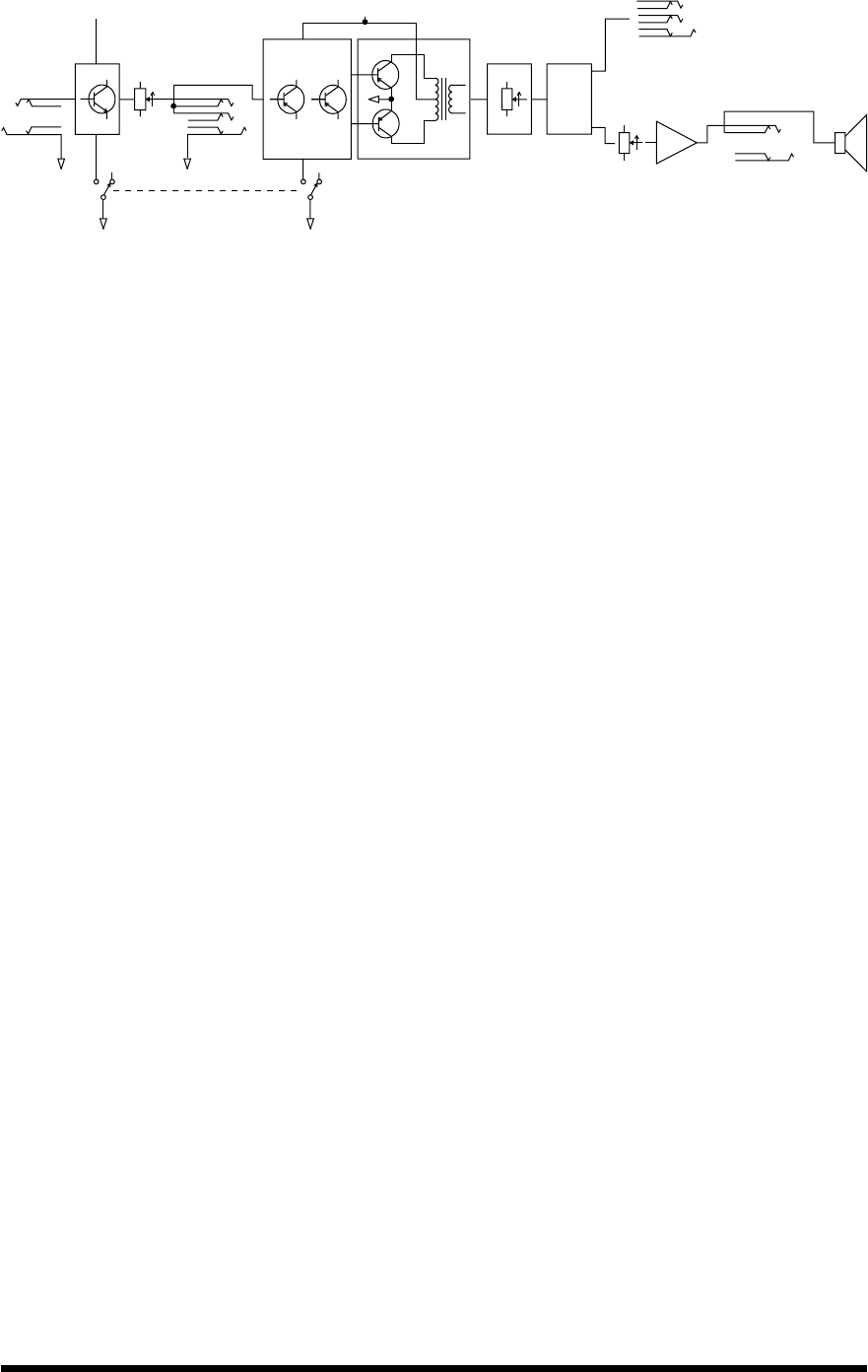
11
Brian May Special Signal Path Flowchart
GAIN
9V BATTERY SIMULATOR
GAIN SWITCH
SPEAKER SYSTEM
EMULATION
10 Watt
POWER AMP
OUTPUT
TRANSFORMER
SIMULATION
VOLUME
HEADPHONE
AND
RECORDING
OUTPUT
EXTERNAL
LOUDSPEAKER
OUTPUT
TONE
BOOSTER ONLY
OUTPUT JACK
INTERNAL
LOUDSPEAKER
(FULL RANGE RESPONSE)
9V BATTERY SIMULATOR
PUSH-PULL OUTPUT STAGE
PREAMP
& DRIVER STAGE
BOOSTER
TREBLE
S
T
S
R
T
S
R
T
S
T
With reference to the above flowchart:
i) The TREBLE BOOSTER stage is a direct copy of Brian’s homemade Treble
Booster pedal. The only things different are:
a) Our circuit is connected to the gain switching circuit to reduce the
pedal booster gain in the LOW Gain switch position. This is required
to clean up the operation of the pedal circuit
b) The output is fed through the GAIN control. The original pedal does
not have this. With the GAIN control turned up full (i.e. on “10”) and
the GAIN switch on HIGH, this is equivalent to the original pedal. The
GAIN control allows for different sounds to be produced.
ii) The BOOSTER OUTPUT jack allows the Booster to be fed into another
amp (AC30 Normal channel for instance) for Brian’s on-stage sound. Use of
this jack makes the rest of the
Brian May Special
inoperative. This has
been done for the reason that, due to circuit constraints, the output from the
booster pedal section is different depending on whether or not it is plugged
into the “Deacy” circuit, or into another amp that has a much higher input
impedance.
iii) PREAMP & DRIVER STAGE.
This follows the original as much as possible, but:
a) Silicon PNP transistors are used in place of the original obsolete
Germanium types, but they have been chosen for similar operation,
and also have extra circuitry to help them “believe” they are Germa-
nium.
b) The inter-stage driver transformer has been replaced by an electronic
transformer simulation. This was required to try and emulate the
performance of the original obsolete transformer.
c) The addition of the gain switching circuit.

















